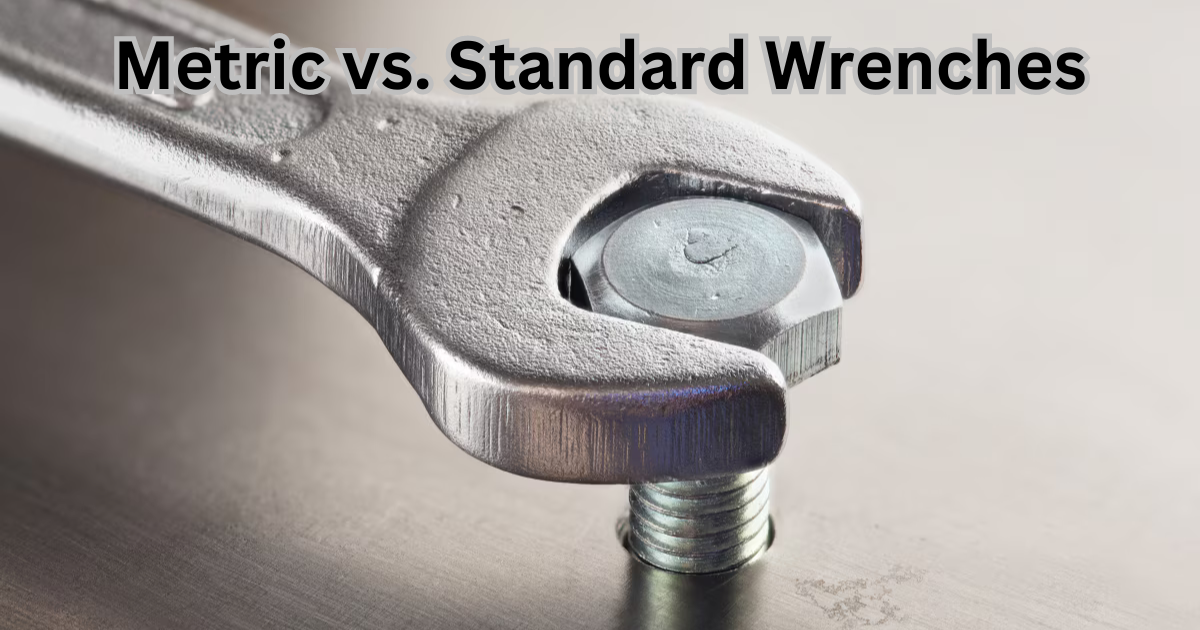An essential tool for any mechanic’s toolbox is a wrench. For tasks requiring grip and torque application, such holding or rotating nuts and bolts, it is indispensable. You might come across various kinds of wrenches, each with its own set of characteristics. Standard and metric wrenches are the primary foci of this conversation.
What is a Standard Wrench?

It should come as no surprise that the standard wrench is also known as an imperial wrench, given that it uses the imperial measuring system. You guessed it; the English units were the inspiration for the imperial measuring system, which saw widespread adoption across the British Empire after its formal inauguration in 1826.
In the 1970s, the SAE (Society of Automotive Engineers) changed to the imperial measurement system, which is when the standard wrench first came into use. The standard wrench is a typical tool in many American workshops, and its measuring system is now popular.
The standard wrench is also distinguished by its units. The measurements of the socket are shown in inches and the relevant parameters are factors of violation. Worm sizes typically vary from half an inch to one inch. This instrument is available in a total of fourteen different sizes.
To sum up, the standard wrench is designed for the American market and measures in inches.
What is a Metric Wrench?

Looking across the table, we can see the metric wrench. The dimensions, measured in millimeters and integers, are one distinguishing feature of the metric wrench. Like the SI, it is based on the International System of Units. You may find it in most regions of the world as a more frequent measuring gadget, thanks to the system it utilizes.
Socket sizes are indicated by the sizes, which vary from 4 to 18 millimeters. As mentioned before, the measurements are in whole numbers, making them straightforward to utilize. The metric system is widely used around the globe. Notable exceptions are Liberia, the United States, and Myanmar.
Standard vs. Metric: What are the Differences?
A novice may have trouble distinguishing between standard and metric wrenches if they are packaged together because they seem identical. To help you distinguish between them, let’s examine a few features of the wrenches.
- Measurements
- Price
- Applications
Standard vs. Metric Tools
Comparing standard and metric tools, what are your thoughts? Anyone who runs a workshop or is physically active should be familiar with this topic. The standard American engineering (SAE) or imperial (US) measuring system is utilized by standard tools. The metric system is the foundation of metric tools.
The units of measurement are different; commonplace instruments employ feet, miles, yards, and inches. The units of measurement in the metric system are millimeters, centimeters, meters, and kilometers.
Conclusion
The wrench is one of those essential tools that no mechanic should be without. You can use it to keep nuts and bolts in place, as well as to turn them. As we can see from the comparison of imperial and metric wrenches, the two systems employ distinct units of measurement.
Here we have the metric wrench, which works with the international system of measurements, and the standard wrench, which employs the imperial system. This article compares and contrasts all of the tools by taking a close look at them individually. Pay close attention to the wrench’s measurement readings at all times to prevent work-related accidents and frustrations.




